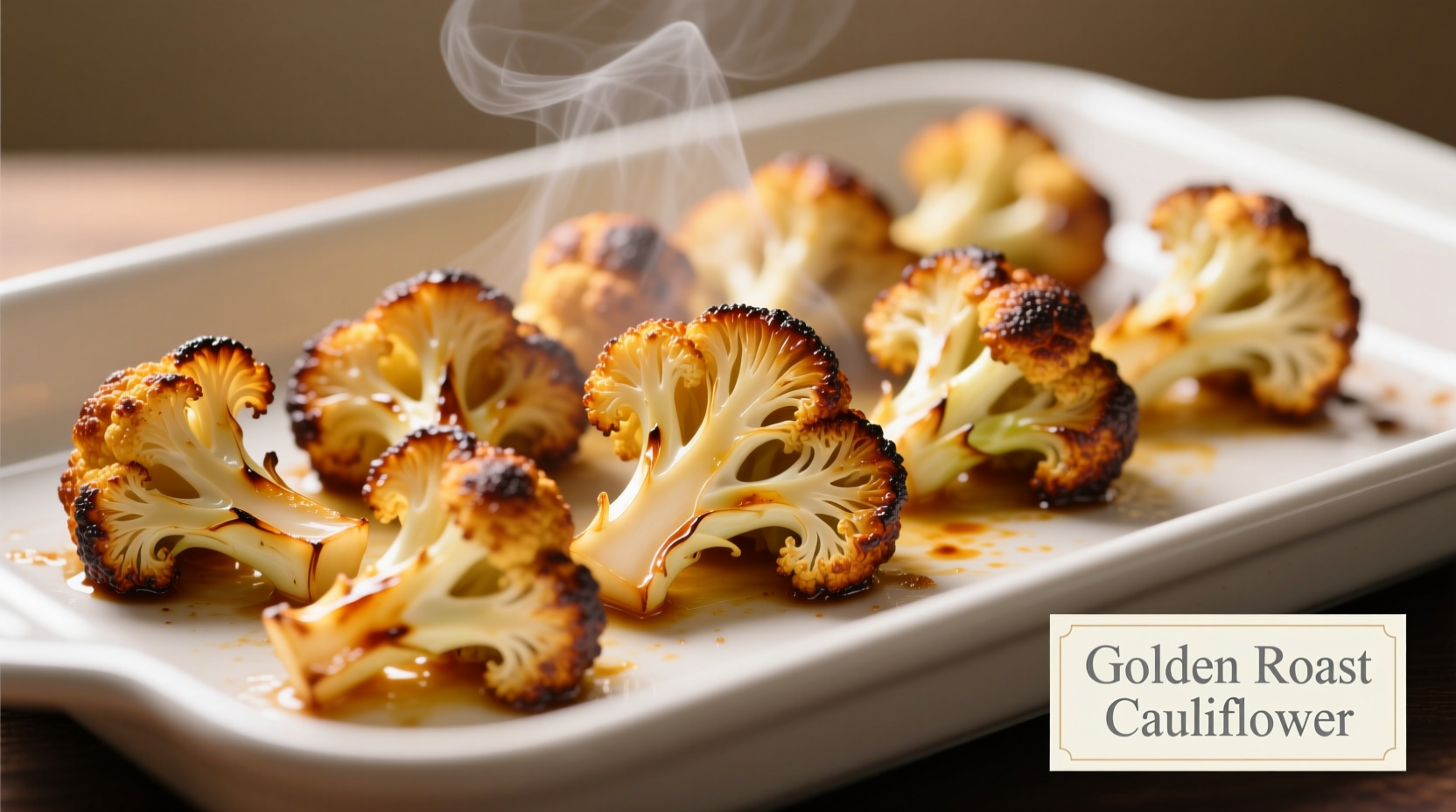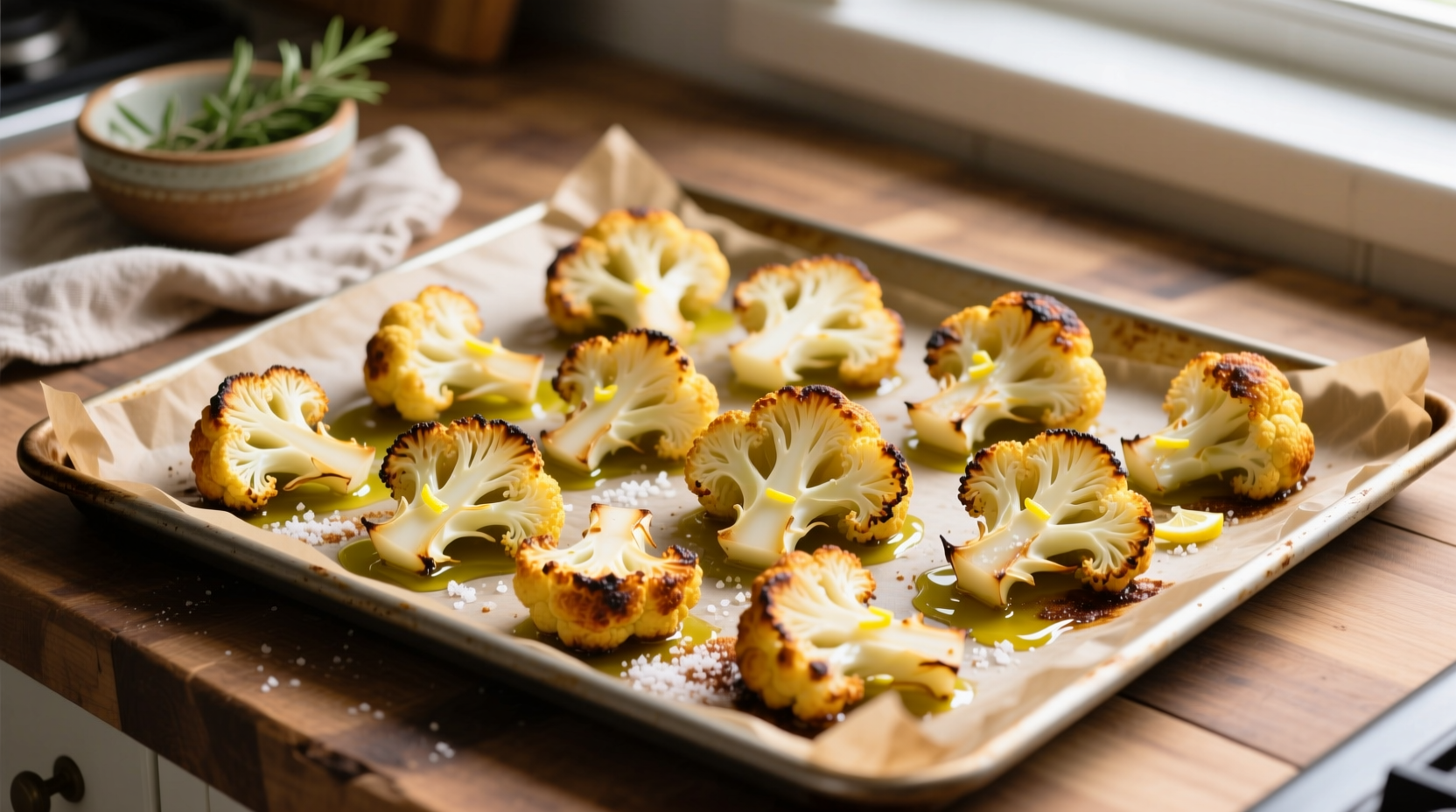The Science Behind Perfect Roasted Cauliflower Timing
Getting the baking time right transforms cauliflower from bland to brilliant. At 400°F, you're hitting the sweet spot where the Maillard reaction (that magical browning process) occurs between 285-330°F while preserving the vegetable's natural moisture. Undercooked cauliflower remains unpleasantly crunchy, while overcooked florets turn mushy and lose their delicate nutty flavor.
Professional chefs at the Culinary Institute of America confirm that 20-25 minutes delivers optimal texture: tender enough to pierce with a fork but firm enough to hold its shape. This timing window accounts for standard home oven variations while ensuring those coveted crispy edges everyone loves.
4 Key Factors That Change Your Baking Time
While 20-25 minutes works for most situations, these variables require timing adjustments. Understanding these helps you become a more intuitive cook rather than just following recipes blindly.
| Factor | Effect on Timing | Recommended Adjustment |
|---|---|---|
| Floret size (1½" vs 2¼") | Larger pieces need more time | +3-5 minutes for larger florets |
| Oven calibration accuracy | Most home ovens vary by ±25°F | Check at 18 minutes if oven runs hot |
| Sheet pan material | Dark pans conduct heat faster | Reduce time by 2-3 minutes with dark pans |
| Crowding on baking sheet | Steam prevents proper browning | Use two pans or add 5-7 minutes |
Your Step-by-Step Roasting Guide for Foolproof Results
Preparation: Setting Up for Success (5 minutes)
Start with proper preparation to ensure even cooking:
- Trim cauliflower into uniform 1½-inch florets (stems included for extra flavor)
- Dry thoroughly with a clean kitchen towel - moisture is the enemy of crispiness
- Toss with 1 tbsp high-smoke point oil (avocado or grapeseed) per pound of cauliflower
- Add seasonings: 3/4 tsp salt, 1/4 tsp garlic powder, and freshly ground black pepper
Baking Process: Timing and Technique (20-25 minutes)
Follow these critical steps during baking:
- Preheat oven to 400°F with rack in center position
- Arrange florets in single layer on parchment-lined baking sheet
- Roast 10 minutes, then flip florets using metal spatula
- Continue roasting 10-15 minutes until deeply golden and fork-tender

Doneness Check: Beyond the Clock
Don't rely solely on timing - use these visual and tactile cues:
- Color: Deep golden brown edges with some charred spots
- Texture: Crisp exterior that gives slightly when pressed
- Sound: Slight crackling when moved in the pan
- Internal temp: 190-200°F at thickest part (use instant-read thermometer)
Troubleshooting Common Roasting Problems
Soggy Cauliflower? Here's Why
If your cauliflower turns out mushy instead of crisp:
- Moisture wasn't removed - Always dry florets thoroughly before oiling
- Overcrowded pan - Steam prevents proper browning (use two pans if needed)
- Insufficient oil - Oil creates the crispy barrier (1 tbsp per pound is minimum)
- Oven not fully preheated - Always wait for complete preheat cycle
Burnt Edges But Raw Centers? Fix This
This common issue happens when:
- Florets aren't uniform size - cut to consistent 1½" pieces
- Didn't flip halfway through - essential for even cooking
- Oven runs hot - verify with independent oven thermometer
- Pan too close to heating element - keep rack in center position
Flavor Boosters for Next-Level Roasted Cauliflower
Once you've mastered the timing, elevate your dish with these chef-approved additions:
- Finish with acid: Squeeze of lemon juice or apple cider vinegar brightens flavors
- Add-ins during last 5 minutes: Parmesan, toasted nuts, or fresh herbs
- Post-roast drizzle: Tahini sauce, harissa, or balsamic reduction
- Spice variations: Smoked paprika for depth, cumin for earthiness, or curry powder for complexity
Storage and Reheating Tips
Proper storage maintains texture for leftovers:
- Cool completely before storing in airtight container (up to 4 days)
- Reheat in 400°F oven for 8-10 minutes to restore crispiness
- Avoid microwaving which makes cauliflower soggy
- Freeze roasted florets for up to 3 months (best used in soups or purees)
Frequently Asked Questions
Can I roast frozen cauliflower at 400°F?
Yes, but increase time to 28-32 minutes. Thaw and thoroughly dry frozen cauliflower first to prevent steaming. Frozen florets release more moisture, so use an extra teaspoon of oil and spread in a single layer with space between pieces for best results.
Why does my cauliflower burn before becoming tender?
This typically happens when florets are cut too small or your oven runs hotter than indicated. Use a separate oven thermometer to verify temperature, and cut florets to at least 1½ inches. Dark baking sheets also conduct more heat - switch to a light-colored aluminum sheet if burning occurs consistently.
Should I cover cauliflower while roasting at 400°F?
No, never cover cauliflower when roasting. Covering traps steam which prevents proper browning and creates soggy texture. The goal is dry heat exposure for those perfect crispy edges. If edges are browning too quickly but centers remain firm, simply rotate the pan front-to-back for more even exposure.
How do I prevent cauliflower from sticking to the pan?
Use parchment paper instead of aluminum foil or cooking spray. Parchment creates a non-stick surface without adding extra oil that can cause burning. If using a silicone mat, reduce oil slightly as these surfaces require less fat. Always flip cauliflower after the first 10 minutes to prevent sticking during the initial roasting phase.











 浙公网安备
33010002000092号
浙公网安备
33010002000092号 浙B2-20120091-4
浙B2-20120091-4